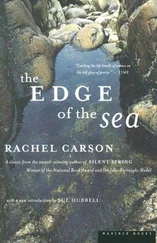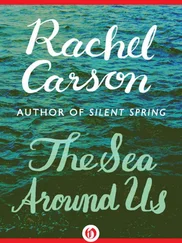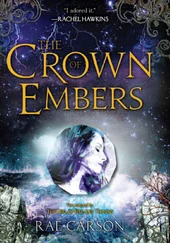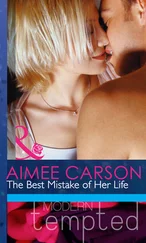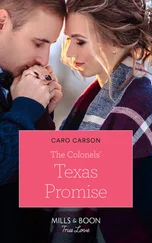CIBA is an acronym of the Swiss company Chemische Industrie Basel, whose Dutch subsidiary in Maastricht no longer makes pens, but it does still produce a wide range of electronic materials, inks, graphics, paper, plastics and rubber. It began its life in Basel in the 1850s producing fuchsine, a new chemical dye derived from coal-tar, so called because of its resemblance to the deep purple red of the fuchsia flower. In 1859, after the Battle of Magenta in Italy, in which the Franco-Sardinian alliance defeated Austria, the new colour was named magenta. The victorious general, Marie Edmé Patrice de Mac Mahon, was created Duke of Magenta by Napoleon III, and later became President of France. His ancestor Mac Mahon from Clare was one of the ‘Wild Geese’, the army of Patrick Sarsfield which, after its defeat at the Battle of Aughrim, and under the terms of the Treaty of Limerick of 1691, left Ireland for France.
There is an avenue Mac Mahon in Paris, one of those which leads to the Arc de Triomphe. We did not walk it when we were there, but we did stroll along boulevard Magenta, and, scanning the blue signs of the intersecting streets, we could not resist taking rue de la Fidelité, which led us into rue de Paradis, where we found the Musée du Cristal. You remember, Nina, the displays of crystal urns and wine-glasses and baroque candlesticks and glass flutes and punchbowls multiplied a hundredfold in the mirrored rooms, the fantastic tinkling chandeliers composed of a thousand multifaceted pieces, chandeliers reflected by my later memory of those that glittered overhead that evening in New York at the Ambassador’s reception. And I thought of Tommy Geoghegan, whom we met a few days later, quite by accident it seemed, in one of those dark lobby bars off Washington Square, all polished oak and brass and discreet waiter service. The violently blue suit he’d worn at the reception had been replaced by a light tweed jacket and a polo shirt, his red face had toned down to a healthy pink, and the mild boorishness he’d displayed that night now seemed like brash charm. I could see why people, as you’d said, would take him into their confidence. And he was intelligent. He’d begun by enquiring after my father. I didn’t know you knew my father, I said. Yes, he said, I met him at one of those Esperanto conferences, in Dublin. Marvellous man, almost convinced me that Esperanto, by replacing English as an international language, would provide a shield for minority languages such as Irish. Quoted James Connolly the Irish rebel to me, did you know Connolly spoke Esperanto? said Tommy Geoghegan, and I confessed I didn’t. Well, it fitted very well with Connolly’s socialism, or communism, call it what you will, said Geoghegan, and of course it fitted very well with your father’s ideas. What was it? for smaller nations to consent to the extinction of their language, would not hasten the day of a universal language, but would rather lead to the intensification of the struggle for mastery between the languages of the greater powers, I think Connolly said something like that. And of course Zamenhof thought the same, he had a vision of a world united by a mutual respect in which the smaller nations could participate as readily as the great powers. And, if you look at it, it’s not unlike what we in MO2 are trying to achieve, even out the differences, said Geoghegan. I must say, Gabriel, I’m glad to see you with Miranda, a very special woman — you’d gone to the powder room by this stage — but then you don’t need me to tell you that, he said, leaning forward confidentially, and I caught a whiff of his Old Spice aftershave.
Afterwards, I remarked on it disparagingly to you. Oh, I don’t know, you said, it’s a very underrated scent, very clean and smooth, nice lemon and lavender notes above the sandalwood, you shouldn’t be put off by the name. Or the bottle. You remember the ad, Girls like it — is there any better reason to wear Old Spice ? I’ve worn it myself, you said. Have you? I said, I hadn’t noticed. Then it must have been when I wasn’t with you, Angel, you said.
Look for a long time at what pleases you
Nothing is ever truly lost, my father used to say, for every thing in the universe is in the place where it finds itself, and is observed by God, who sees everything. By the same token, though I have so far failed to come across an equivalent of the red and black Dinkie pen that first attracted you to me, I know that my quest is not fruitless. I don’t know how many thousands Conway Stewart made of this particular model, but, scattered as they might be across the world, some of them broken and cast aside, buried in landfills or in the backs of sofas, perhaps ground underfoot in a purposeful or careless moment, I trust that enough remain for one of them, one day, to find its way to me. Not that it will be identical to yours, for the parameters of each design allow for random variations that make each pen subtly individual.
The taxonomy of Conway Stewart pens is complex: serial numbers run from No. 1 to No. 1216, but the system is not chronological, for many of the higher numbers are early models, and vice versa; and each model comes in a range of colours and designs and sizes, with different caps, clips, bands, levers and nibs, so that the permutations run into the many thousands. Your Dinkie, for example, is a 540, but that number comprises over a hundred variations, of which your ring-top Red and Black Mottled Vulcanite is only one. I’m writing this with a Dinkie 540, as it happens, not a ring-top like yours, but one with a pocket-clip. I bought it from an eBay seller in Hong Kong, who told me it came from the last effects of a lady widowed by a colonial administrator, and its Peacock Plumage livery — a spilled petrol swirl of violets, emeralds, mauves, purples, sapphires, tortoiseshells and black, also known as Butterfly Wing — has an Oriental shot silk iridescence. It’s too small for me to hold altogether comfortably, so it’s difficult to control, but that makes me form my words all the more deliberately, watching the letters as they appear on the page to form these sentences. As a tribute to one of its many colours, I loaded the Dinkie with violet ink, and its unfamiliar smell reminds me that there are little perfume atomisers made to look like fountain pens: unscrew the cap, and instead of a nib you find a button that releases a glazed rainbow of scent when pushed — ‘Parfum Exotique’, aromas standing in for words. You remember, Nina, reciting Baudelaire’s poem as we stood by his grave in Montparnasse. It was Easter Monday, Cemetery Monday, as I dubbed it, for we had then gone on to the necropolis of Cimetière Père Lachaise, wandering the long avenues and intersecting alleyways between the graves and vaults and sepulchres of bankers and statesmen and princesses and movie stars and artists, mausoleums shaped like pyramids and beehives and gazebos, adorned with baroque marble angels and imposing statues of those interred beneath them.
We visited the grave of Oscar Wilde, which was fronted by a massive block bearing a winged Egyptian deity, its plinth covered with lipstick kisses. Marcel Proust’s grave was an unexpectedly plain, flat, black marble slab. It seemed unvisited, but the equally simple grave of Colette — Colette who, like Lee Miller, was one of your heroines — was covered with fresh cut flowers, and, as we approached, a young woman, whose frizzy hennaed hair shone like a beacon above her plum-coloured velvet dress, added a single tuberose lily. You know what the French say about the tuberose, you whispered. No, I said, what do they say? They say a young girl should not breathe its fragrance after dark, in case it might prove dangerous to her chastity. Colette was very fond of the tuberose. What is it she wrote? a cloud of dreams bursts forth and grows from a single, blossoming stem, you said. And it seemed that of all the flowers there the tuberose gave out its scent the most, a heady, almost luminous aroma. Though I don’t know what it does to the cats, you said. The cats? I said. Yes, they say that cats visit her grave in droves every night, because she was very fond of cats, time spent with cats is never wasted, she used to say. I would have expected Lee Miller to have mentioned the cats when she visited Colette, but she didn’t, you said, and you went on to recall Lee Miller’s Colette piece, which appeared in the March 1945 issue of Vogue .
Читать дальше


